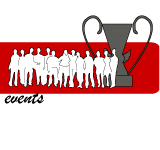
NOTICE
PREMIO ARCHIMEDE 2016, organized by studiogiochi, concerns the invention of unpublished boardgames.
The Prize, dedicated to the great Alex Randolph, who was its president during the first seven editions, made the wishes of more than 30 authors come true, thanks to the pubblication of their games.
Everybody can participate (single or group), there are no age nor nationality limits.
The Competition is patronised by the City of Venice and is part of a series of cultural events dedicated to games, also as prevention against compulsive gambling.
The J.P. Halvah Foundation, created by the very same Randolph and directed by Herbert Feuerstein, donates € 4.000 to the first three places in form of anticipations of the future publications of their games.
The final ceremony will take place in the Sala San Leonardo of Venice on October 1st 2016. During this occasion there will be an exhibition of the finalist games.
The Musée Suisse du Jeu will organize an exhibition of the winner games.
The prize is recognized by UISP (Unione Italiana Sport per Tutti) and byGioNa (Associazione Nazionale delle Città in Gioco) for its social and cultural value. In fact it is a ludic and recreational activity that promotes the right of playing for any person and for any age.
Besides the Archimede Prize, the jury will assign the Special Prize Sebastiano Izzo and many other awards such as:
• Carta Mundi Special Prize for the best card game: the prize consists in 1.000 copies of the winner game made by Carta Mundi for free, given to its creator; the game must be composed by one or two decks of cards.
• Special Prize IDG for the best game entirely created by an author that never published a game before. In case of a prototype with more than one author, all of them must be never published authors.
• In collaboration with CNR, inside the European Project Photonics4All and in occasion of the UNESCO Internatioanl year of Light 2015, the Special Prize Science in Games for the best educational and learning game, with a special attention to issues concerning light and its many aspects. More infos about it on: www.fotonicaingioco.it
All finalists will also receive games offered by the publishers who support the Prize.
www.spielmaterial.de offers a 20% discount to any author participating to the Premio Archimede who makes an order. Take this chance to realize your prototype in a professional way. Please contact the Premio Archimede secretary to receive the discount code.
To participate
Fill in the participation form within May 31th 2016 and send it to:
PREMIO ARCHIMEDE 2016 c/o studiogiochi
S. Polo 3083
30125 VENEZIA
The authors are required to pay a participation fee of €30 for each inscribed game in these two possible ways:
1) paypal to info@studiogiochi.com.
2) bank transfer (IBAN DE09 3605 0105 0003 7001 84 BIC SPESDE3E).
Eventual custom fees have to be refunded by the game authors, otherwise the game won’t be inscribed. Studiogiochi will have the right of first refusal on the finalist games (see the participation form).
The game
The prototype
Information about the authors
The rules
Participation form
The jury, the criteria and procedures for the selection of the games
• Leo Colovini (spokesman)
• Giuseppe Baggio
• Mauro Gaffo (journalist, Italy)
• Umberto Rosin and Stefano Scaramuzza (tana di Goblin Venezia)
• Federico Colovini
The selection jury will carefully study all game rules, dividing them among its members
• During the jury meetings each member explains to the others the rules he read. Each game will be played by at least two of the selection jury members. If during playing the game is judged as not appropriate, its playing can be interrupted before the end of the game.
The jury will consider the games accordingly to the following criteria (in order of importance):
At this point the final jury come into play:
• Michael Bruinsma and Wim De Boer (Phalanx, The Netherlands)
• Bernd and Moritz Brunnhofer (Hans im Glück, Germany)
• Cyril Demaegd (Asmodée, France)
• Silvio De Pecher (la tana dei Goblin, Italy)
• Dario De Toffoli (studiogiochi, Italy)
• Uwe Molter (Amigo, Germany)
• Philipp Sprick (Ravensburger, Germany)
• Dieter Strehl (Piatnik, Austria)
• Albrecht Werstein and Andreas Preiss (Zoch, Germany)
• Barbara Schmidts (Kosmos, Germany)
• Klaus Ottmaier (Pegasus, Germany)
During the final ceremony, there will be a voting in front of the public to decide the winner. Each jury member will give 7 points to his favourite game, 6 points to his second favourite, and so on.
Both groups will be joined by F. Berger, G. Franceschini, G. Marchesin, E. Marzorati, P. Modolo, R. Nardo and selected playtesters for consultancy.
Edition 2014:
there are already two contracts, but soon more will be official.
Edition 2012:
Marco Polo by S.Luciani and D.Tascini, ed. Hans im Glück, Who sleep don’t fish by D. Rigolone ed. Piatnik (Espresso fishing),
Ready to rock by T. Bonetti, indipendent publication.
Edition 2010:
Builders of Egypt by Phil Harding, ed. Kosmos (release in 2016),
Cacao by Phil Harding, ed. Abacus Spiele,
Castles by Marco Pozzi, ed.Heidelberger Verlag,
Aquileia by Pier Volontè, ed. Zoch and 999 games,
Crazy race by Antonio Scrittore, ed. Zoch and 999 games (Kalimambo),
Drop Site, by Dennis Hoyle, ed. Gordion games.
Edition 2008:
Nuraghe by S. Luciani, ed. Cranio (Sheepland),
Portobello Road by Simone Luciani, ed. Piatnik (Frutti di mare),
Egizia by Virginio Gigli, ed. Hans im Glück,
Strada romana by Walter Obert, ed. Ghenos,
Edition 2006:
Ur by Paolo Mori, ed. What’s your game,
Star Systemby Walter Obert, ed. Scribabs,
The muddle maze by Enrico Pesce and Federica Rinaldi, ed Scribabs/Post sciptum (Sator Arepo Tenet Opera Rotas).
Edition 2004:
Terranova by Gaetano Evola and Rosanna Leocata, ed. Winning Moves, Moria by Alessandro Saragosa, ed. Clementoni (König Solomons Schatzkammer),
Al Fischmarkt by Mario Papini, ed. Clementoni,
Criminal mouse by the prisoners of the San Vittore Prison, ed. Faro,
Feudo by Mario Papini, ed. Zugames.
Edition 2002:
Andrew’s cage by Andrea Mainini, ed. da Recent Toys International (Tunnelz),
Spin & Trap by Andrea Mainini, ed. Gold Sieber + ed. Recent Toys,
Collection by Luisa and Francesco Cognetti, - ed. Dal Negro + ed. Piatnik (Minestrone),
Major Tom by Roland and Tobias Goslar, ed. Kronberger Spiele (Tom Tube),
Old Town by Stephan Riedel, ed. Clicker Spiele,
Cromodrom by Giuseppe Bonfiglio, ed. Piatnik (Farb Flitzer).
Edition 2000:
Bisanzio by Alessandro Saragosa, ed. 999 games (Justinianus),
Gnomoni by Duilio Carpitella, ed. Piatnik (San Gimignano) - nomination SdJ 2002,
Sopravvento (2000) by Alberto Zaccagni, ed. Sopravvento.
Edition 1998:
Verba game by Giuliano Parenti and Torquato Lo Mele, ed. Dal Negro,
Trikube by Luca Borsa, ed. da Ravensburger as Verbindung gesucht,
Trigos by Paolo Gasperat, ed. Arg Design.
Edition 1996:
Forma o colore? by Francesco Rotta, ed. Hiku Spiele + ed. Faro (Oxxo), Algoritmo by G.Dotta, ed. Qualitygame,
Kupido by Giovanni Caron, ed. Qualitygame,
C’era una volta by Francesco Lutrario, ed. Carte Segrete,
Konos by G.Grieco, A.Grieco, N. Roccasalva, ed. GE.MI







